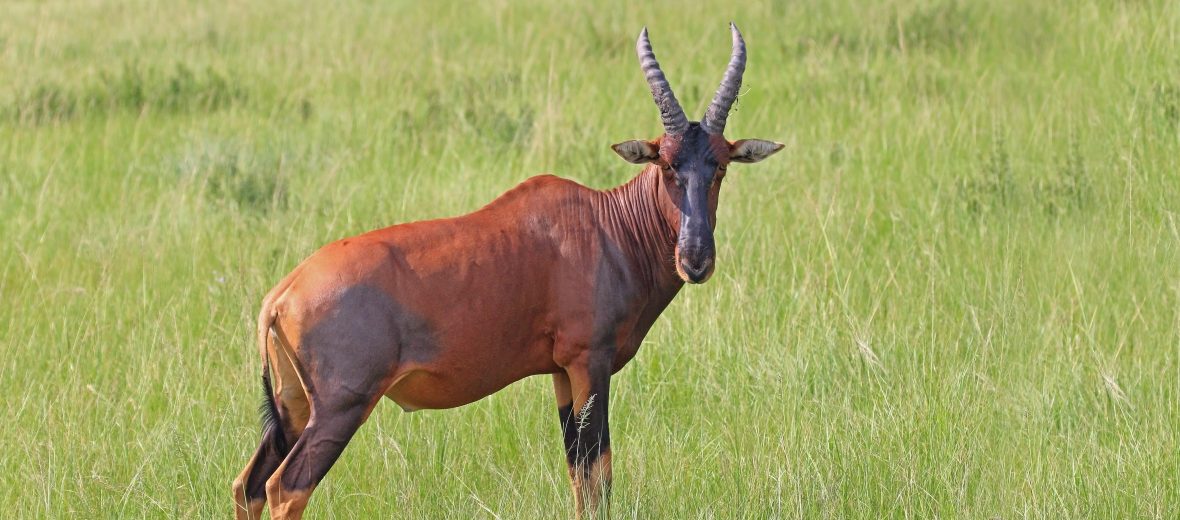
The topi (pronounced toh-pee) hails from Democratic Republic of the Congo, Kenya, Rwanda, Tanzania, and Uganda. They prefer semi-deserts, savannas, and floodplains of sub-Saharan Africa. These critters face the threats of habitat loss and destruction at the hands of residential and commercial development; competition for food at the hands of farming and ranching; hunting; trapping; and climate change, which results in severe droughts. They are listed as Vulnerable by the IUCN. Their numbers are also decreasing. The IUCN statistics are from 2016.
First the Stats…
Scientific name: Damaliscus lunatus jimela
Weight: Up to 340 lbs.
Length: Up to 7 feet, plus their up to 23.5 inch tail
Height: Up to 49.61 inches, at the shoulders
Lifespan: Up to 35 years
Now on to the Facts!
1.) These critters are highly social.
2.) The name topi hails from the Swahili language.
3.) Other names for these critters are nyamera, Senegal hartebeest, mhili, jimäla, simäla, and nemira, Serengeti topi, Ruaha topi, and Uganda topi.
4.) Based on their geographic location, their coat colors can be lighter or darker.
5.) They prefer to graze on medium to tall green grasses and eat via quick, small bites.
But wait, there’s more on the topi!
6.) Both males and females defend their territory.
7.) If they only have access to fields of grass and no water, they can go for long periods of time without drinking standing water, as they can derive much of their needed moisture from the grasses they eat.
Did you know…?
Topi can run up to 56 mph!
8.) Lions, jackals, caracals, hyenas, and humans all prey on topi.
9.) Births typically happen between October – December.
10.) Females undergo up to an 8 month gestation (pregnancy) that yields a single calf.
But wait, there’s still more on the topi!
11.) Calves are born precocial (self sufficient), to a degree. But they still need to be weaned and protected against predators.
12.) Calves are born as either a hider, or a follower. Hiders stash away in the tall grass till old enough to follow the herd. Followers begin doing just that… following the herd, from birth.
13.) Topi are diurnal (active during the day) creatures.
Now a Short Topi Video!
Be sure to share & comment below! Also, check out the Critter Science YouTube channel. Videos added regularly!
Want to suggest a critter for me to write about? Let me know here.
Some source material acquired from: Wikipedia & IUCN
Photo credit: Charles James Sharp



